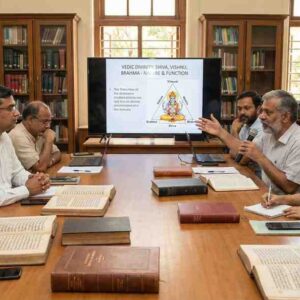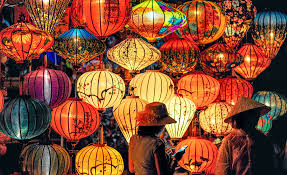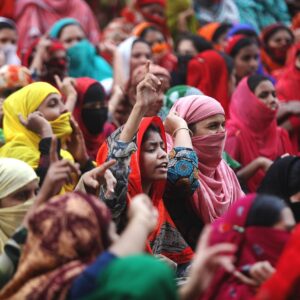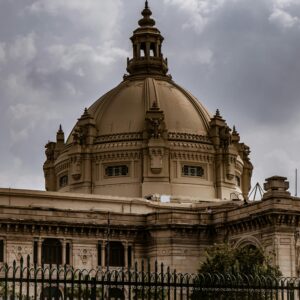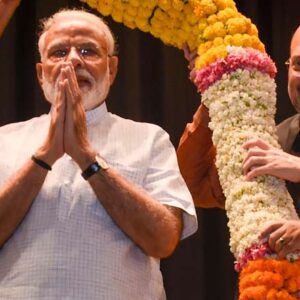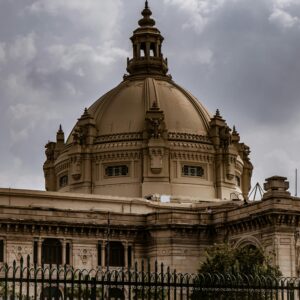Exploring the Timeless Connection Between Spiritual Wisdom and Contemporary Life
Varanasi– Uttar Pradesh, the land of the Ganga and Yamuna, holds within its borders a tapestry of spiritual traditions that have profoundly shaped the philosophical thought of not only its people but also the nation at large. From the ancient wisdom of the Vedas to the teachings of Kabir and the Sufi mystics, this state is a living repository of spiritual richness. As the world races toward modernity, Uttar Pradesh stands as a bridge between ancient spirituality and contemporary thought, reminding us of the eternal truths that underpin human existence.
Key Metrics
- Spiritual Footfall: Varanasi, Ayodhya, and Mathura attracted over 6 crore pilgrims and tourists in 2023, reflecting their enduring spiritual appeal (Uttar Pradesh Tourism Department).
- Religious Sites: Uttar Pradesh is home to more than 25,000 temples, 20 prominent dargahs, and sacred Buddhist sites, making it a global hub of spirituality (ASI Records).
- Yoga and Wellness Programs: Over 10 lakh participants joined state-sponsored yoga camps in 2023, reflecting a growing interest in integrating spirituality with daily life (Uttar Pradesh Wellness Council).
- Cultural Celebrations: Festivals like Kumbh Mela and Dev Deepawali draw millions, with the 2019 Prayagraj Kumbh Mela alone attracting 24 crore devotees (Government Reports).
The Spiritual Foundations of Uttar Pradesh
1. The Ganga: A Flowing Philosophy
The Ganga, revered as theMother River, symbolizes purity, life, and liberation. Its banks, particularly in Varanasi, have witnessed the confluence of philosophy, rituals, and introspection for millennia.
- Spiritual Insight: The river teaches detachment and continuity, inspiring philosophical reflections on the impermanence of life.
- Contemporary Relevance: The Namami Gange Program, aimed at cleaning the river, has spiritual undertones, reinforcing the sacred duty of environmental stewardship.
2. The Teachings of Saints and Mystics
Uttar Pradesh has been home to luminaries likeKabir, Tulsidas, and Rumi, whose teachings transcend religious boundaries and emphasize unity and love.
- Kabir’s Verses: Kabir’s poetry challenges dogmas and promotes introspection, urging humanity to seek the divine within.
- Sufi Influence: Shrines like Dargah Sharif in Bareilly and Badaun foster interfaith harmony, drawing followers from all walks of life.
3. The Philosophies of Buddhism
Buddha’s first sermon atSarnathnear Varanasi laid the foundation forDhamma (the law of righteousness). His teachings on theMiddle Pathcontinue to inspire ethical and balanced living.
- Global Appeal: Sarnath remains a spiritual hub, drawing monks, scholars, and seekers from around the world.
Spirituality in Modern Life
1. Yoga and Meditation as Tools for Well-Being
Yoga, rooted in ancient spiritual practices, has become a cornerstone of modern wellness, blending philosophy with health.
- State Initiatives: The Uttar Pradesh Wellness Mission organizes yoga camps across the state, with over 1,200 camps held in 2023.
- Philosophical Insight: Yoga emphasizes the harmony of body, mind, and soul, teaching balance amid life’s chaos.
2. Spiritual Tourism as a Connector
Religious tourism forms a significant part of Uttar Pradesh’s economy and serves as a medium to connect people with spiritual heritage.
- Data Insight: Ayodhya, now a global pilgrimage destination, saw a 150% increase in visitors after the Ram Mandir development began.
- Cultural Programs: Events like the Dev Deepawali in Varanasi celebrate spirituality through light and devotion, attracting millions annually.
3. Spirituality in Education
Schools in Uttar Pradesh are integrating value-based education, inspired by spiritual teachings, to instill moral and ethical values in students.
- Example: The Moral Science Program in state schools includes lessons from the Bhagavad Gita, Quran, and Bible, fostering unity and understanding.
Challenges in Sustaining Spiritual Philosophies
- Commercialization of Pilgrimage Sites: Increasing commercialization risks diluting the sanctity of spiritual centers.
- Example: The burgeoning market around Kashi Vishwanath Temple has raised concerns about preserving its serene atmosphere.
- Environmental Pressures: Spiritual sites like the Ganga face ecological challenges, threatening their symbolic and practical relevance.
- Government Response: The Namami Gange Project has allocated ₹20,000 crore for rejuvenating the river and its surroundings.
- Generational Disconnect: Younger generations often view spiritual practices as outdated, necessitating innovative ways to engage them.
Philosophical Insights for the Future
- The Balance of Dharma
- The teachings of the Bhagavad Gita emphasize performing one’s duties with detachment, offering a framework for navigating modern challenges.
- Unity Amid Diversity
- Sufi and Bhakti traditions underscore the importance of unity and compassion, guiding communities to coexist peacefully.
- Meditation as Reflection
- Practices like Vipassana, rooted in Buddhist teachings, offer tools for introspection, helping individuals align with their inner selves.
Conclusion: A Spiritual Renaissance in Uttar Pradesh
The spiritual philosophies of Uttar Pradesh are timeless, yet they hold immense relevance in today’s fast-paced, technology-driven world. By integrating these ancient teachings with modern governance, education, and environmental initiatives, the state can chart a path that honors its heritage while preparing for the future.
In a world fragmented by material pursuits, Uttar Pradesh’s spiritual traditions remind us to pause, reflect, and reconnect with the essence of humanity. This blend of ancient wisdom and contemporary application has the potential to inspire not just the state but the world.



